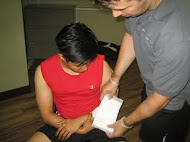Topic Overview
Cuts happen every day. However, it is up to the person to determine if this is a cut that they need to see their doctor about. The longer a wound stays open, the more likely a person will get an infection. That is why these larger wounds may require stitches from a doctor. Along with stitches, a doctor can choose to use staples or close the wound with adhesives. This needs to happen within six to eight hours after the cut happens. Very serious wounds can be treated up to 24 hours after it happens.
For those who have a wound, they are going to wash around the cut and stop the bleeding, and then pinch this together to help with stopping the bleeding. Do not use an antiseptic until the doctor has seen this wound and whether it will need stitches.
When a Doctor is Needed

There are times in which a doctor is going to need to see a cut. These situations include:
- Wounds that have jagged edges or they are more than .25 inches’ deep
- If you can see fat, bone or muscle in the wound
- Wounds that are over a joint, as this can cause the wound to open more when it is moved
- Wounds that are deep that are located on the hands or fingers
- Anywhere a wound is located that could cause scarring
- Wounds that are longer than .75 inches’ long
- Wound that bleed after 15 minutes of direct pressure
There are other situations in which a doctor may need to close a wound for you. These include:
- Shallow wounds or those with smooth edges
- Or those wounds that are the result of a puncture, often these wounds are harder to clean, and can scar, thus a doctor is often need to prevent this.
Don’t Remove Foreign Items
Do not get rid of any foreign item — like a twig or metal — wedged in the wound. The item might have struck something underneath the skin such as an artery. The item might help stop the bleeding. The instant you jerk it out there won’t be anything to block the flood flow which can lead to further harm.
Try To Clean The Wound
If you can, mildly clean the wounded region before going to the hospital by carefully dampening it.
Using cold water and some antiseptic soap can do the trick. This is a great way to rinse off any wound.
Related Video On Cuts
https://www.youtube.com/watch?v=Lnm1iULRU_I
